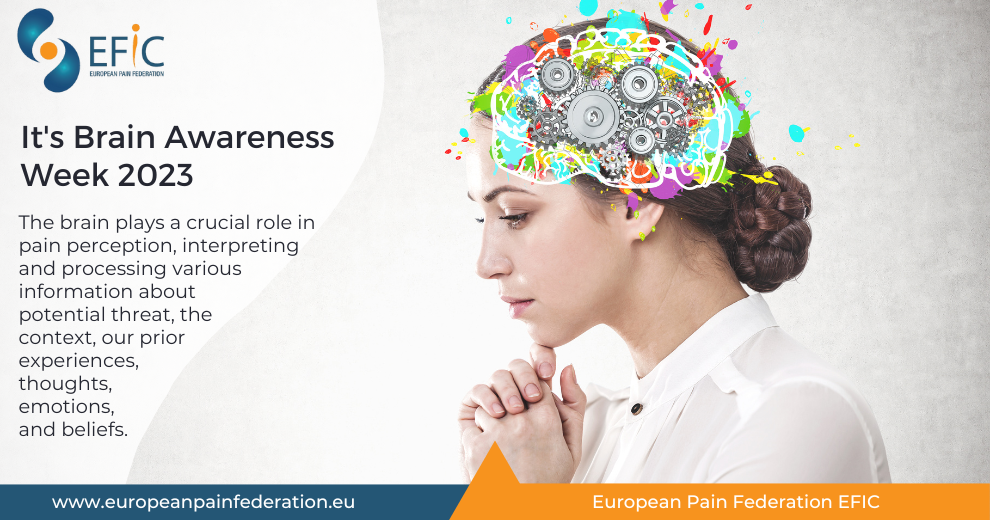Brain Awareness Week is a global initiative that aims to increase public awareness and understanding of the brain and brain research. It is a collaborative effort between scientists, educators, and organizations to host events and activities that engage the public in learning about the brain and its importance to our lives. The week-long campaign includes a wide range of events such as lectures, exhibitions, workshops, and other interactive activities. These events are designed to promote brain health, improve public understanding of neuroscience, and inspire the next generation of brain scientists. Brain Awareness Week is an important opportunity for the public to learn more about the brain and its vital role in our lives.
The brain and pain have a complex and intertwined relationship. Pain is an essential aspect of human survival, alerting us to potential harm and encouraging us to take action to protect ourselves. The brain plays a crucial role in pain perception, interpreting and processing various information about potential threat, the context, our prior experiences, thoughts, emotions, and beliefs. Pain is considered an emergent property of the person, with the brain playing a large role.
The limbic system, a collection of structures in the brain associated with emotions and motivation, is also involved in pain perception. Pain can cause emotional responses such as fear, anxiety, and depression, all of which are controlled by the limbic system. Moreover, the brain’s prefrontal cortex plays a crucial role in pain modulation, determining how much attention is given to pain signals and the degree to which they are felt. The prefrontal cortex can also activate pain-suppressing pathways to reduce the sensation of pain, such as through the release of endorphins. Finally, the brain’s plasticity, or ability to change and adapt, can play a role in pain management. In cases of chronic pain, the brain may reorganize itself in response to the persistent pain signals, leading to long-term changes in pain perception.
In conclusion, the relationship between the brain and pain is complex and multi-faceted, involving numerous regions and structures of the brain. Understanding this relationship is essential for effective pain management and treatment.
To find out more about Brain Awareness Week here: https://www.brainawareness.org/
Please find related articles from the European Journal of Pain below:
Adaptive coding of pain prediction error in the anterior insula
Reconceptualizing pain-related behaviour: Introducing the concept of bodily doubt
Investigation of pain sensitivity following 3 nights of disrupted sleep in healthy individuals
Pain and Parkinson’s disease: Current mechanism and management updates
Pain modulates early sensory brain responses to task-irrelevant emotional faces
Is central sensitization relevant in acute low back pain?
Indicators of central sensitization in chronic neuropathic pain after spinal cord injury
